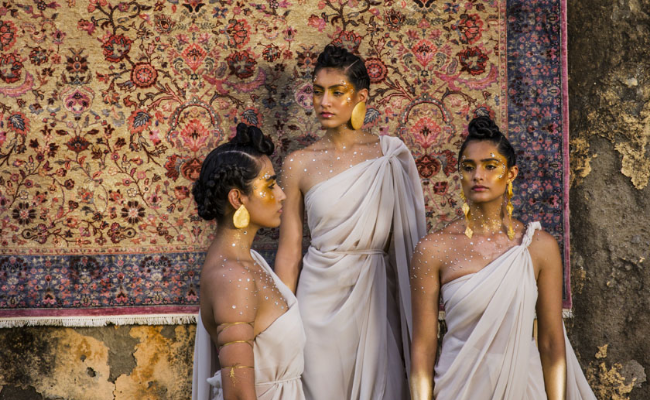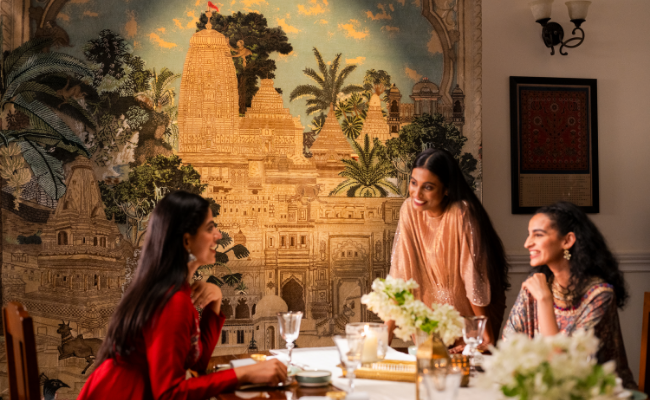
Understanding Rug Pricing: What Influences the Cost of Rugs?
If you are reading this blog, you have officially earned the title of a “decor enthusiast.” Every one of us has been to the market and purchased something expensive. After thorough research, a significant amount would have been invested in that article. When people think of carpets, there is often a notion or presumption that they are expensive. Well, we at Obeetee agree with it. Carpets are expensive! Being one of the biggest rug makers in the country for more than a century, we have solid reasons to prove the point. Factors such as the quality of materials, the intricacy of the design, and the time and skill required for production all contribute to the high cost of rugs.

In the realm of decor, carpets are timeless accents. A fine handmade carpet has the ability to last generations and be passed down as a family heirloom. Did you know? The Pazyryk Carpet is the world's oldest rug, dating back to the 5th century B.C. The carpet is stored in a museum in Russia and stands as proof of what we said in the previous line. Imagine something so strong in its construction yet so comforting, so elegant in visuals yet portraying a story so durable that it passes the test of time. It would come with a price, wouldn’t it? Handmade carpets are often referred to as investment pieces. The older the carpet, the higher its value, like antique art pieces, old currency coins, etc. Of course, there are specific clauses regarding the authenticity that need to be checked before, like the make, the material quality, the design style, the pattern, and the artists. Still, once everything gets a green light, the actual value of an old carpet is determined.
Below are a few factors that influence the cost of rugs.
-
The make- Carpets have diverse accents. From crafting them with hands to using a hand-operated machine until a fully automatic machine crafts everything independently, they have come a long way in their construction styles. Hand-knotted carpets are the most expensive. This is because there is not even a single involvement of any machinery, and it requires a lot of time, patience, and hard work from the artisans. Hand-knitting rugs is one of the oldest techniques for crafting carpets. From 60 days to 600, hand-knotted carpets can take much time to be ready, depending upon their design. Please note that the higher the knot count, the more expensive the rug is.
After being hand-knotted, hand-tufted carpets come into the picture. Although crafted using a hand-operated machine(a frame), they still have a decent yet affordable price range. Comparatively faster and easier to craft, hand-tufted carpets are the most common as they capture handmaking's essence, encapsulate every design pattern, and are affordable.
The thicker the pile, the more expensive the carpet. The following range includes Dhurries and kilims. These are flatweave rugs and are easy to make. Though they can embed any design on their canvas, they are affordable and solve the purpose of enhancing the decor of your space. Machine-made rugs are like mass-produced goods. Similar in design, the rugs use the essence of uniqueness, are the easiest to craft as there is no human effort behind them, and are often crafted using lower-quality materials. This category of rugs is cheaper.
-
The Material- Everything natural/organic is becoming scarce due to global warming. Thus, carpets crafted using natural materials are costly. Wool is the primary material used in rug making. The wool's durability, absorption, cushioning, and soft fibers make it the best carpet material. At Obeetee Carpets, we use wool sourced from New Zealand (the best in the world) and the international grade often exported outside our country to make our carpets. Natural materials like Cotton, jute, and recycled fibers like polyester are comparatively light on the pocket of the manufacturer and, eventually, the consumer.
The most expensive carpets are crafted using With its soft touch, the lustrous silk texture brings to life the essence of the pattern on the car[et canvas in your space.
-
The Size- Irrespective of the carpet make and material, its size significantly influences its price. A hand-knotted rug is already expensive because of the effort and the handwork. The bigger the size of the carpet, the more time and effort the artisan will invest, eventually increasing the cost of labor and the price of the rug. The same goes with carpets of every other make. The effort, time, raw material, and investment in making a more oversized rug are much more.
-
The design- More than a home decor accent, handmade carpets were considered as storytellers. Old carpets tell us many stories about historical wars, kingdoms, and instances of the past. Artisans considered carpets a form of expression and often weaved live scenes on the car[et canvas. While antique designs are costly, many rug makers are actively collaborating with renowned designers and artists worldwide to design rugs. The more famous the artist, the more expensive the carpet featuring his design. The cost of the carpet is also increased because it is a “one-of-a-kind” piece.
- The antiques- While many carpets are preserved in the museum because of their historical value and importance, rug makers craft copies of these authentic and unique designs and sell them in the market. Apart from this, many original antiques are also sold/auctioned in the industry. These carpers are expensive not just because of their authenticity but also their cultural value.
At Obeetee Carpets, we have carpets for everyone. From hand-knotted to hand-tufted, our collection has rugs crafted using natural and recycled fiber, featuring unique designs by renowned artists worldwide. Whether you are looking for a budget-friendly carpet for your space or a classy hand-knotted one, a designer piece or something antique or inspired by an antique, we have got you covered. For more information, visit our e-commerce platform https://www.obeetee.in/ or any of our flagship stores in Delhi, Mumbai, Hyderabad, Bangalore, Jaipur, and Kolkata.









